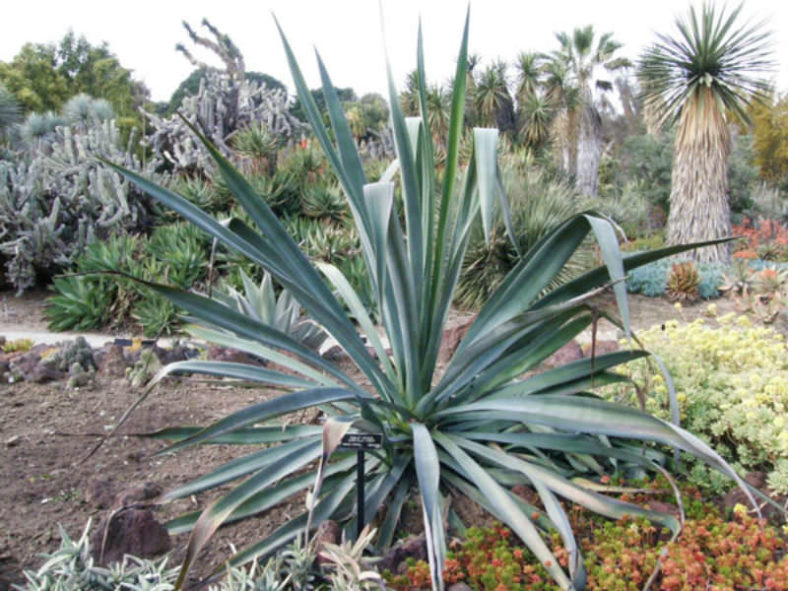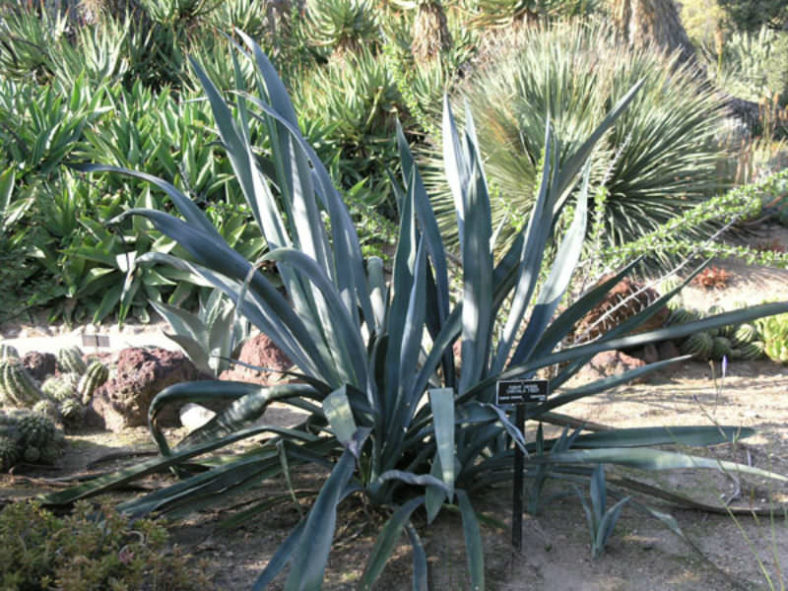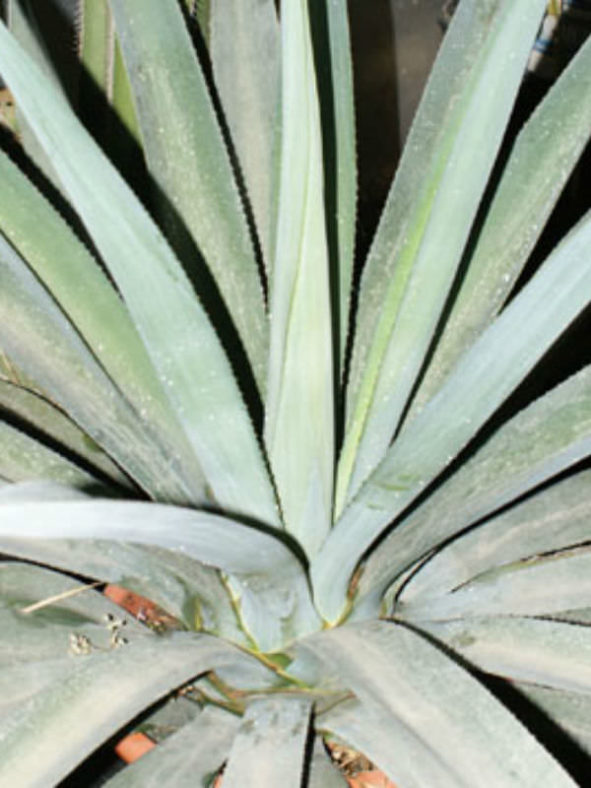Scientific Name
Agave cantala (Haw.) Roxb. ex Salm-Dyck
Common Name(s)
Bombay Aloe, Cantala, Cantala Fibre, Cebu Maguey, Manila Maguey
Synonym(s)
Furcraea cantala
Scientific Classification
Family: Asparagaceae
Subfamily: Agavoideae
Genus: Agave
Etymology
The specific epithet "cantala" (pronounced "kan-TAL-uh") is a vernacular name for this species, which has been accepted into botanical nomenclature.
Origin
Agave cantala is probably native to Mexico. However, it is commonly grown in southeastern Asia, from the Philippines to India.
Description
Agave cantala is a succulent plant that forms short-stemmed rosettes of dark blue-green, linear-lanceolate leaves with black spines along the margins and a long black terminal spine. The stem can grow up to 2 feet (60 cm) tall. The terminal spine can reach a length of 1 inch (2.5 cm). The leaves are thick, channelled towards the base, and can measure up to 6.5 feet (2 m) in length and up to 4 inches (10 cm) in width. The rosette has a life cycle of 6 to 15 years, sometimes extending up to 25 years, during which it produces approximately 250 leaves.
The inflorescence can grow up to 26 feet (8 m) tall, and has a many-flowered panicle with spreading branches on a long peduncle. The flowers are yellow-green with a purple or red tinge. The plant is monocarpic, meaning that the rosette dies after flowering.

Hardiness
USDA hardiness zones 9a to 11b: from 20°F (-6.7°C) to 50°F (10°C).
How to Grow and Care
Agaves are not difficult plants to grow. They are slow-growing and dramatic and will even thrive on a bit of neglect. If you are the type of person who likes to fuss with houseplants and water a lot, Agave is probably not the plant for you. On the other hand, if you are the type of person who likes to set it and forget it, and you have a sunny window, Agave might be the way to go. Be aware that some large varieties will eventually outgrow your room (unless you have a large greenhouse), and Agave can be aggressive. They have irritating sap and sometimes very sharp thorns that can injure small children and even pets.
Generally, Agaves do not require repotting every year. Most species commonly found in cultivation grow very slowly and take a long time to outgrow their pot. It is also best to handle your plant as little as possible since they do not like to be disturbed. When you repot, refresh the spent soil with a new potting mix and ensure the plant is firmly anchored in its pot. However, be careful not to pot the Agave too deep, as that will encourage stem rot during the growing season.
Learn more at How to Grow and Care for Agave.
Links
- Back to genus Agave
- Succupedia: Browse succulents by Scientific Name, Common Name, Genus, Family, USDA Hardiness Zone, Origin, or cacti by Genus
Photo Gallery
Click on a photo to see a larger version.

